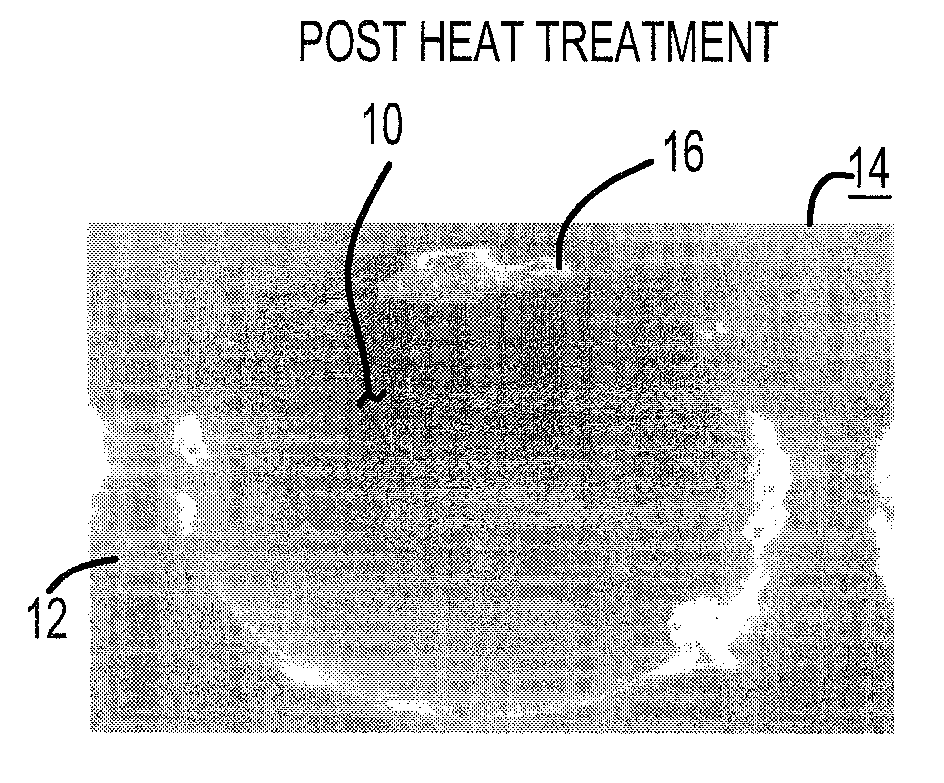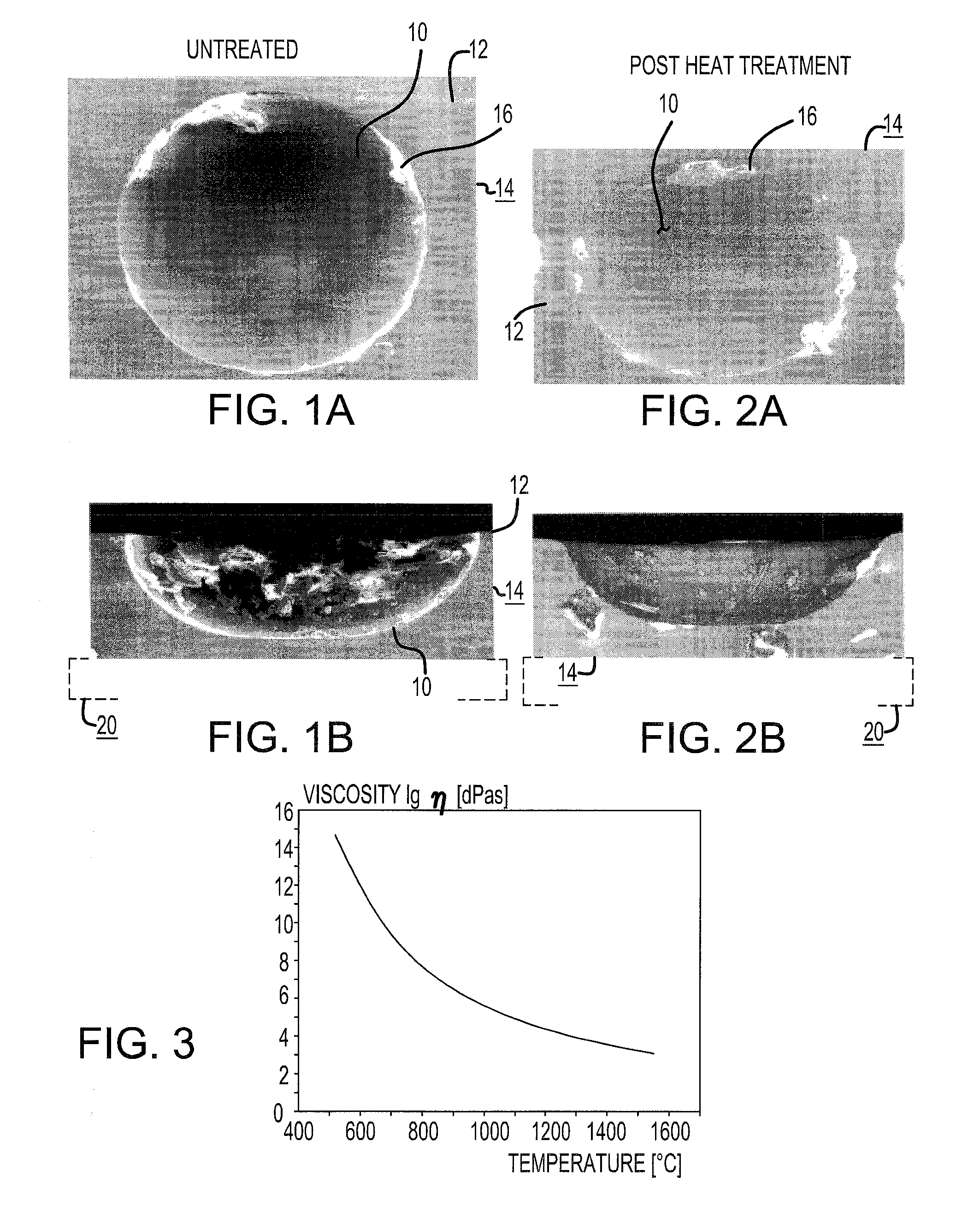Reduced friction molds for injection molded solder processing
a technology of friction molds and injection molded solder, which is applied in the direction of foundry moulding apparatus, manufacturing tools, foundry patterns, etc., can solve the problems of increasing stress and difficulties in controlling the smoothing or radiusing process of pit edges, and reducing viscosity, so as to soften the sharp edges. , the effect of reducing the viscosity
- Summary
- Abstract
- Description
- Claims
- Application Information
AI Technical Summary
Benefits of technology
Problems solved by technology
Method used
Image
Examples
Embodiment Construction
[0021]Referring to FIGS. 1A and 1B of the drawings, there is spectroscopically illustrated a typical pit or cavity 10, which has been etched into the upper surface 12 of a glass mold plate 14, and which shows the peripheral edge 16 of the pit having a relatively sharp configuration at the meeting location with the plate surface, which can readily cause undue damage to be sustained by o-rings of the apparatus and adversely affect the operation of the molding apparatus, such as be a deposition of debris and particulate contaminants of the mold plate surface and in the mold cavities. Moreover, the sharp edge 16 of the mold pit 10 may result in a shortened service life for the o-ring and also adversely affect the functioning of the fill head of the mold apparatus.
[0022]As illustrated in FIGS. 2A and 2B of the drawings, wherein the glass mold plate 14 has been heat-treated at the temperatures such as from about 740° C. to about 800° C. for a predetermined period of time, preferably withi...
PUM
| Property | Measurement | Unit |
|---|---|---|
| softening temperature | aaaaa | aaaaa |
| temperature | aaaaa | aaaaa |
| temperature | aaaaa | aaaaa |
Abstract
Description
Claims
Application Information
 Login to View More
Login to View More - R&D
- Intellectual Property
- Life Sciences
- Materials
- Tech Scout
- Unparalleled Data Quality
- Higher Quality Content
- 60% Fewer Hallucinations
Browse by: Latest US Patents, China's latest patents, Technical Efficacy Thesaurus, Application Domain, Technology Topic, Popular Technical Reports.
© 2025 PatSnap. All rights reserved.Legal|Privacy policy|Modern Slavery Act Transparency Statement|Sitemap|About US| Contact US: help@patsnap.com


